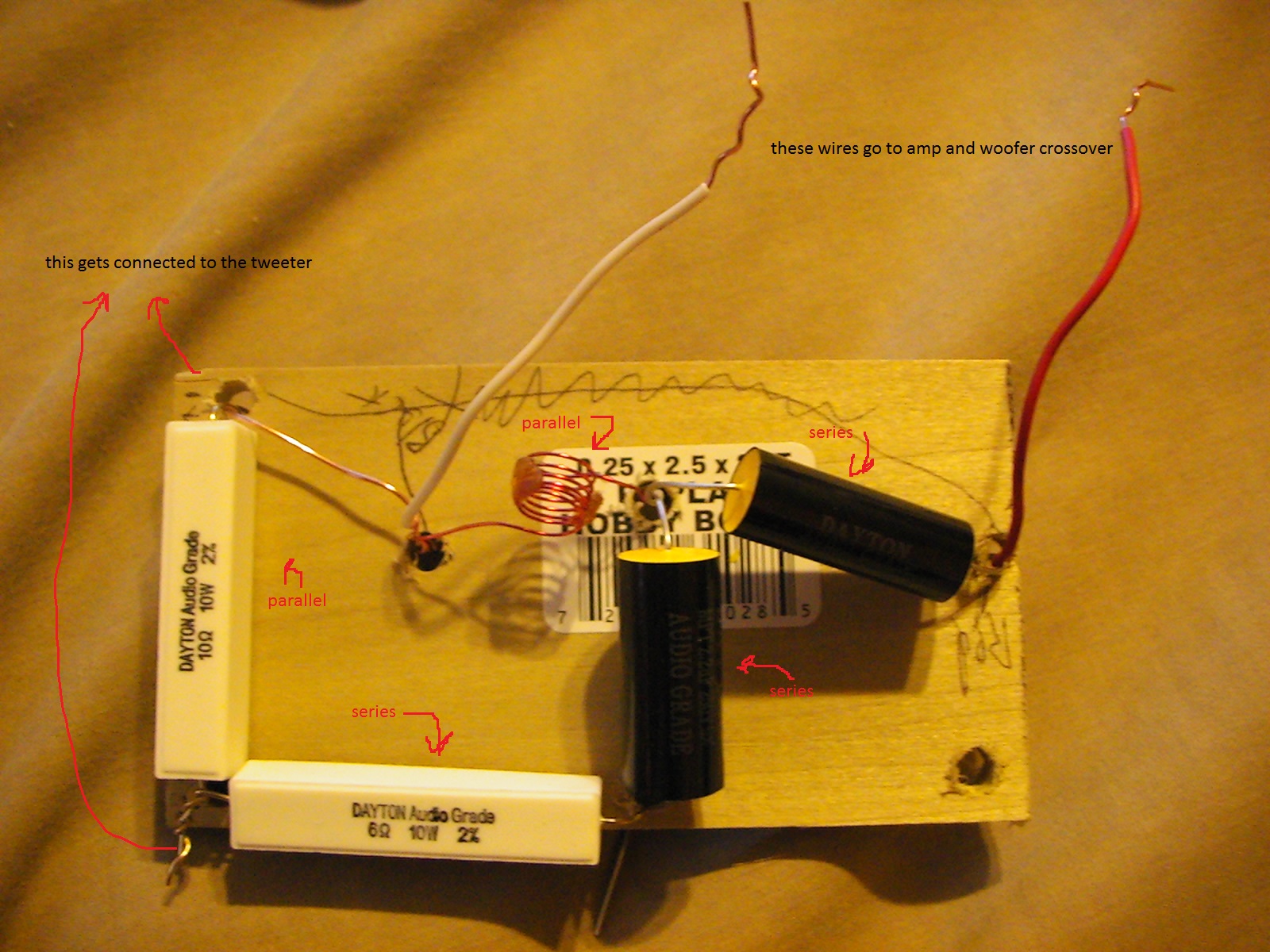I have decided to order all of the capacitors and resistors from parts express, but the air core inductors are expensive. So i was going to try and make them using this wire and this calculator. Is this a good calculator to use, will it be accurate? Do you know of any better way to make these? And do I have to bake the coils when i am finished?
You don't have to bake them if you use zipties. An LC meter would be recommended.
View topic - Trying this out... • Meniscus Audio Forum
I don't use the bolts in the coils anymore, as that is a big no-no. I do use them to 'clamp' a bobbin together while the glue dries.
Later,
Wolf
View topic - Trying this out... • Meniscus Audio Forum
I don't use the bolts in the coils anymore, as that is a big no-no. I do use them to 'clamp' a bobbin together while the glue dries.
Later,
Wolf
Never bake the coils, you'll damage the enamel coating. Rather dip them or spray them with enamel to keep them from 'buzzing'.
Last edited:
If you use that wire do not bake or submerge coils in any solvent or solvent based liquid such as enamels or paints, I very much suspect the wire enamel is of the "self soldering" type, designed to *evaporate* when soldering.
Weakest of the weak.
Weakest of the weak.
Also, I was just going to do a single layer coil, but I would like to do a multilayer coil but i don't understand how it is done, the calculators I have seen for that are a bit confusing. Anyone know of a good calculator to use for coil making? Or even a mathematical formula I can calculate with?
Is there a local store like radio shack that would carry an LC meter, or does any electronic store have one that I could possible go in and use, or are they not common enough?
Is there a local store like radio shack that would carry an LC meter, or does any electronic store have one that I could possible go in and use, or are they not common enough?
Parts Express, MCM Electronics, Newark, Mouser, and others have them. Rat Shack does not have these meters.
Later,
Wolf
The wire you want to use is the correct wire and the poly urethane coating is strong, the calculator does not match my tried and trusted figures. The coils have to be multi layer and of a particular shape.
I need to make a .35mH coil and a 1.1mH coil. Does anyone have the specs on those?
or do those work with the above calculator mentioned.
or do those work with the above calculator mentioned.
Help, help, help. I hooked the crossover up.
First of all i know both the tweeters and woofers work separately.
Now that everything is hooked up, the woofers work but the tweeters don't and the amp overloads at a certain volume and shuts off.
please help.
First of all i know both the tweeters and woofers work separately.
Now that everything is hooked up, the woofers work but the tweeters don't and the amp overloads at a certain volume and shuts off.
please help.
Ohh, and just the woofer side of the crossover works by itself, but the tweeter side of the crossover is very, very quiet and it overloads all of the time on the tweeter side and not the woofer side. so i think there is a problem on the tweeter side. anyone know what it could be?
Very probably you shorted the tweeter .
Please make a hand drawing of what you *actually* connected, or a very clear picture, where all wiring can be seen.
Please make a hand drawing of what you *actually* connected, or a very clear picture, where all wiring can be seen.
Tweeter still works fine going straight to the amp.
Sorry if I wasn't clear.
I didn't mean that you actually shorted the voice coil *inside* the tweeter, but that you placed a short across its terminals, same thing from the amplifier point of view and of course it will mute it also ... and that's exactly what you did.
To be more precise, the puny ".35 milliHy" crossover coil shown actually has 35 micro Hy , according to the calculator I suggested.
Of course it behaves like a short for all practical means.
Thanks God you showed the actual coil instead of linking the original X-over ... which would have sent us all in a wild goose chase.
Look at the crossover and follow the signal path:
1) that short is across the path amp>tweeter, so highs get shorted and can go no further, this explains:
the woofers work but the tweeters don't
2) that short places ¿C1? ... ¿1.5uF? across the speaker output.
No amp likes that and many don't support it.
That explains:
the amp overloads at a certain volume and shuts off.
Hope you didn't pay a premium price for those "Audio Grade" labels printed on those parts.
As of the Xover coils (I guess the other one is also bad) redesign using the calculator.
Hint: you'll probably need some 30X more turns than what you used now.
You'll need to select "multi layer/multi row" and estimate a winding length and thickness.
Start with 1 cm each and redo if too far.
And, of course, good luck !!!!🙂
- Status
- Not open for further replies.
- Home
- Loudspeakers
- Multi-Way
- crossover help for my boombox
